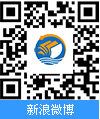
Passage Three
On the morning of November 18,1755, an earthquake shook Boston, Massachusetts. John Winthrop, a professor at Harvard College, felt the quake and awoke. “I rose,” Winthrop wrote, “and lighting a candle, looked on my watch, and found it was 15 minutes after four.” John Winthrop went downstairs to the grandfather clock. It had stopped four minutes before, at 4:11. Except for stopping the clock, the quake had only thrown a key from the mantel (壁炉台) to the floor.
The clock had stopped because Winthrop had put some long glass tubes he was using for an experiment into the case for care. The quake had knocked the tubes over and blocked the pendulum (钟摆). Winthrop, therefore, had the exact time that the earthquake had hit Boston. He looked at the key on the floor. The quake had thrown it forward in the direction of the quake’s motion (运动) by a shock coming from the northwest, perhaps in Canada.
71. The text proves that _______.
the power of nature is terrible
earthquakes happen most often during nighttime hours
the direction of an earthquake can be discovered
universities study the cause of earthquakes
72. The text suggests that _________.
A. Boston was badly destroyed B. earthquakes are common in Boston
C. John Winthrop had difficulty sleeping D. John Winthrop was a scientist
73. Which of the following is true?________.
Some tubes were broken into pieces and stopped the old clock
The professor lit a candle because of power failure
Boston is in the southeast of Canada
The shocks were slight in one way
74. The earthquake happened ________.
A. several minutes before the professor awoke B. and the professor awoke at 4:15
C. in the centre of Boston D. when John Winthrop felt it
75. Choose the right order according to the text.
a. The bed was shaking and John Winthrop awoke.
b. John Winthrop looked attentively at this watch.
c. John Winthrop got up to light a candle.
d. The earthquake happened in Boston in 1755.
e. John Winthrop knew the quake’s direction.
f. John Winthrop knew the exact quake’s time.
g. John Winthrop looked at the key on the floor.
A. g, d, e, a, c, b, f B. d, a, c, b, f, g, e C. a, e, d, c, b, f, g D. e, d, g, b, c, a, f
Passage Four
Oceanography has been defined as “The application of all sciences to the study of the sea”.
Before the nineteenth century scientists with an interest in the sea were few and far between. Certainly Newton considered some theoretical aspects of it in his writings, but he was reluctant to go to sea to further his work.
For most people the sea was remote, and with the exception of early intercontinental travelers or others who earned a living from the sea, there was little reason to ask many questions about it, let alone to ask what lay beneath the surface. The first time that the question “What is at the bottom of the oceans?” had to be answered with any commercial consequence was when the laying of a telegraph cable from Europe to America was proposed. The engineer had to know the depth profile (起伏形状) of the route to estimate the length of cable that had to be manufactured.
It was to Maury of the US Navy that the Atlantic Telegraph Company turned, in 1853, for information on this matter. In the 1840s, Maury had been responsible for encouraging voyages during which soundings (测水深) were taken to investigate the depths of the North Atlantic and Pacific Oceans. Later, some of his findings aroused much popular interest in his book The Physical Geography of the Sea.
The cable was laid, but not until 1866 was the connection made permanent and reliable. At the early attempts, the cable failed and when it was taken out for repairs it was found to be covered in living growths, a fact which defied contemporary scientific opinion that there was no life in deeper parts of the sea.
Within a few years oceanography was under way. In 1872 Thomson led a scientific expedition (考察), which lasted for four years and brought home thousands of samples from the sea. Their classification and analysis occupied scientists for years and led to five-volume report, the last volume being published in 1895.
76. The proposal to lay a telegraph cable from Europe to America made oceanographic studies take on ________.
A. an academic aspect B. a military aspect
C. a business aspect D. an international aspect
77. It was ________ that asked Maury for help in oceanographic studies.
A. the American Navy B. some early intercontinental travelers
C. those who earned a living from the sea
D. the company which proposed to lay an undersea cable
78. The aim of the voyages Maury was responsible for in the 1840s was _______.
to make some sounding experiments in the oceans
to collect samples of sea plants and animals
to estimate the length of cable that was needed
to measure the depths of the two oceans
79. “Defied” in the 5th paragraph probably means “________”.
A. doubted B. gave proof to C. challenged D. agreed to
80. This passage is mainly about _______.
A. the beginnings of oceanography B. the laying of the first undersea cable
C. the investigation of ocean depths D. the early intercontinental communications
Ⅴ. Writing (20 points)
Directions:
For this part, you are allowed 20 minutes to write a letter of about 80 words according to the following situation.
你是Helen,要写一封信给Julie,对她和她的丈夫昨日请你和你丈夫吃饭表示感谢,表示要回请他们,以答谢他们的盛情款待。

